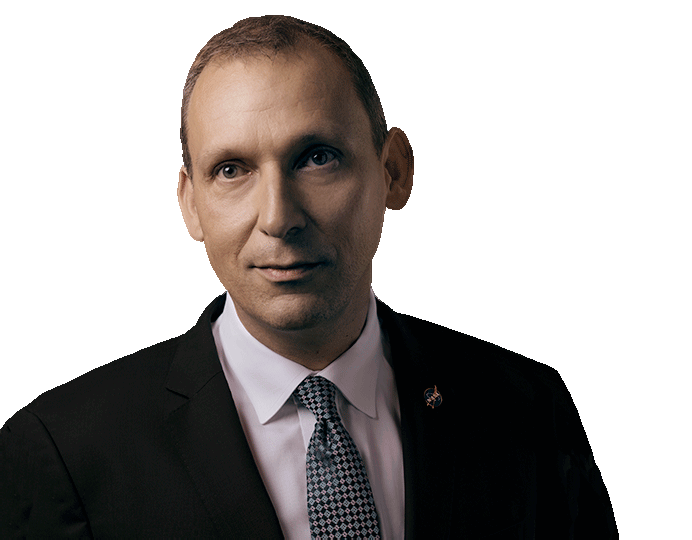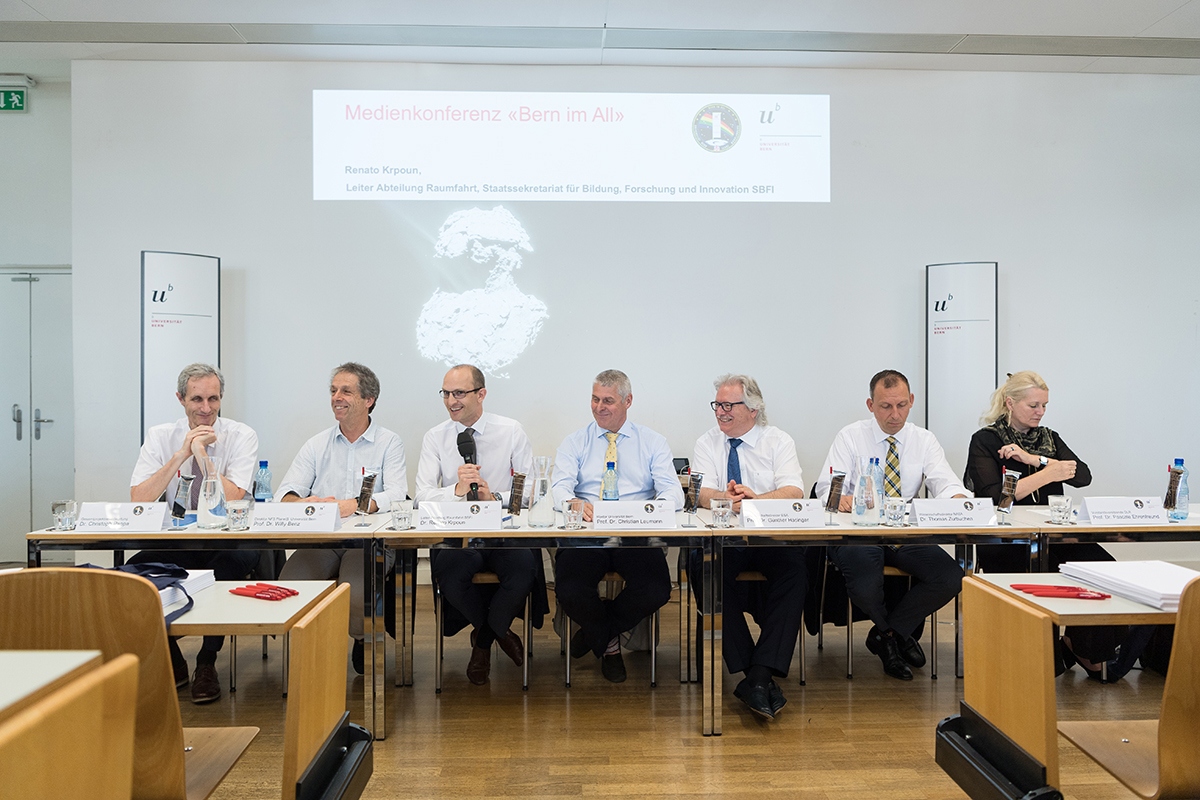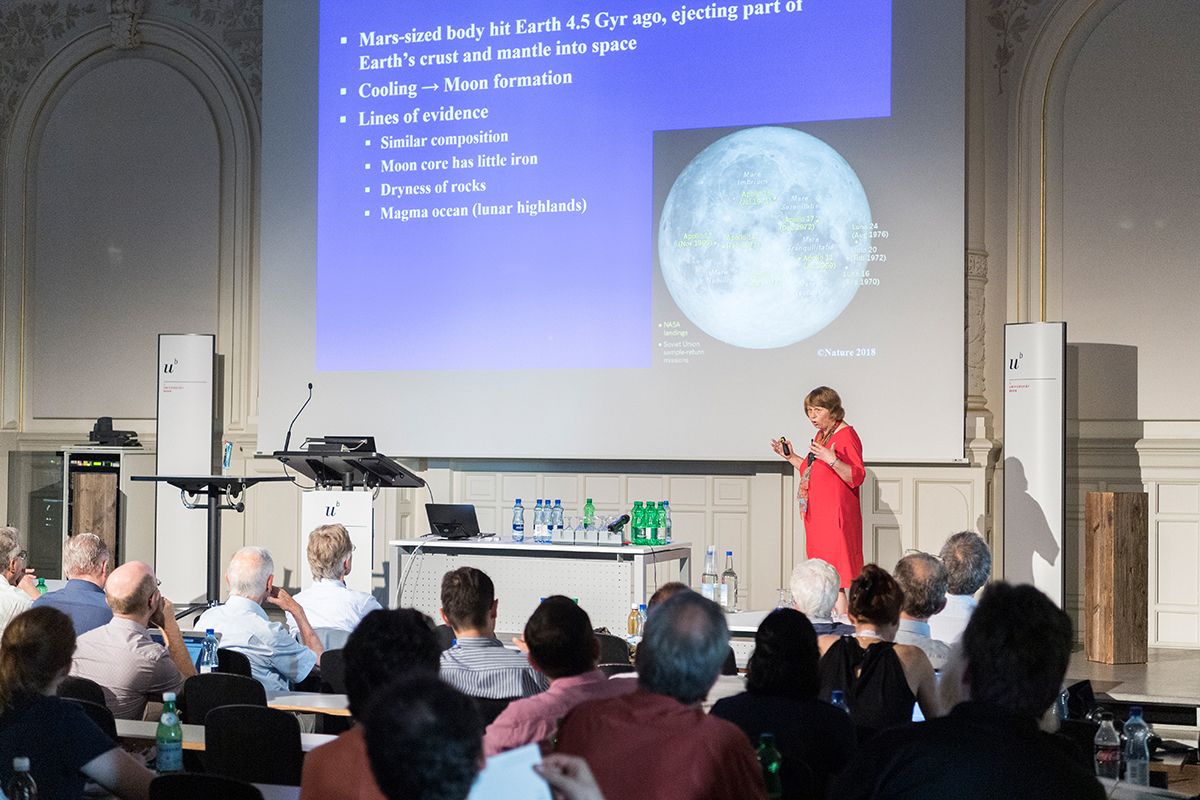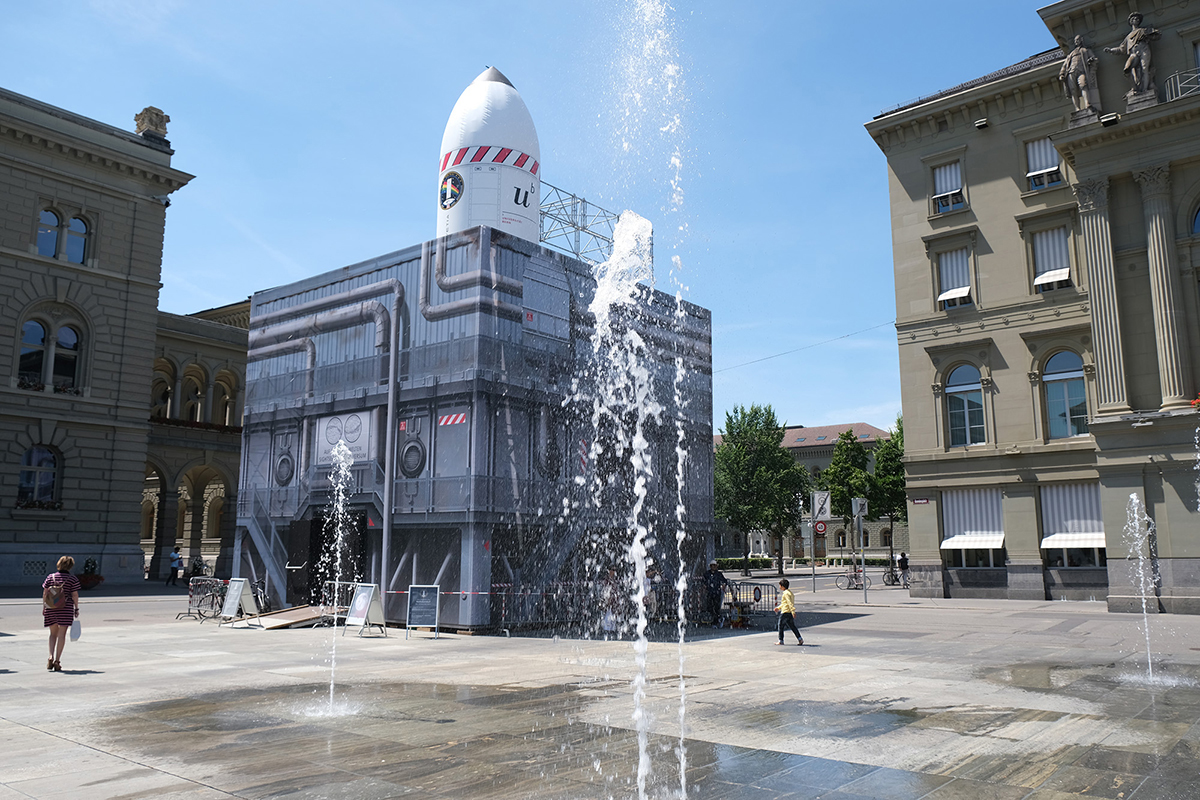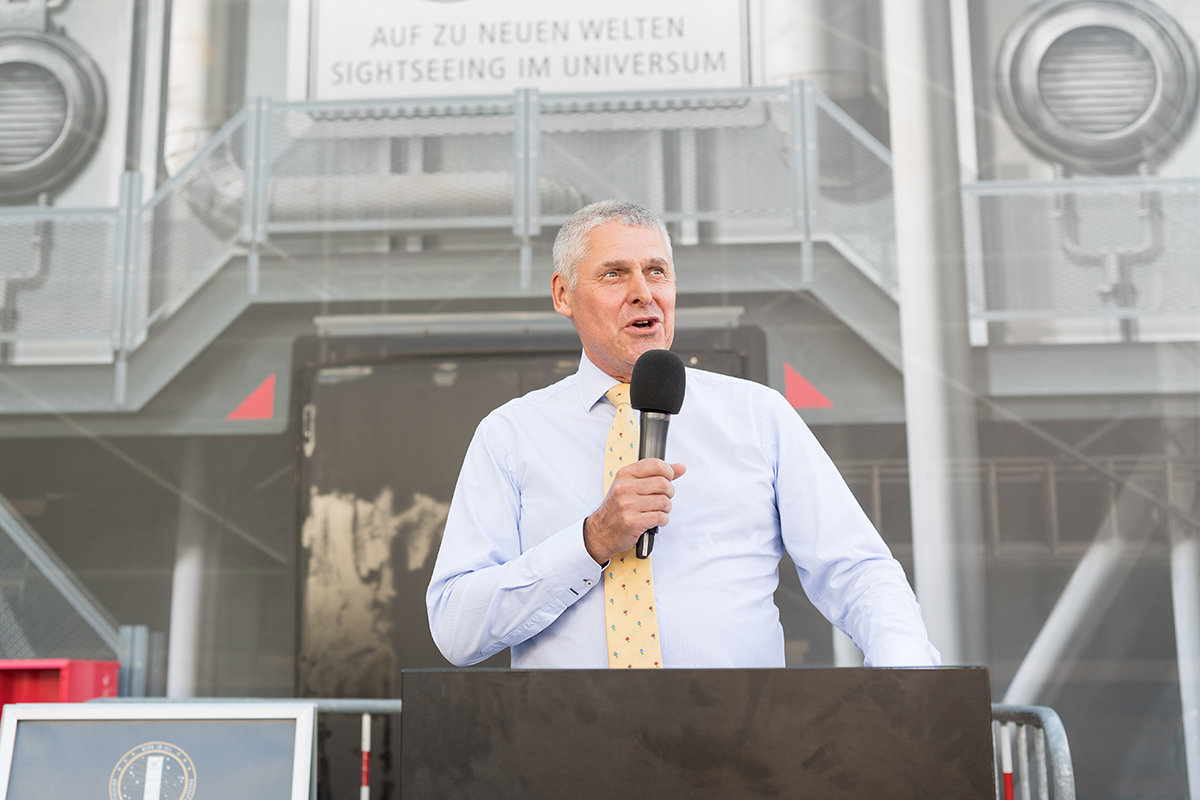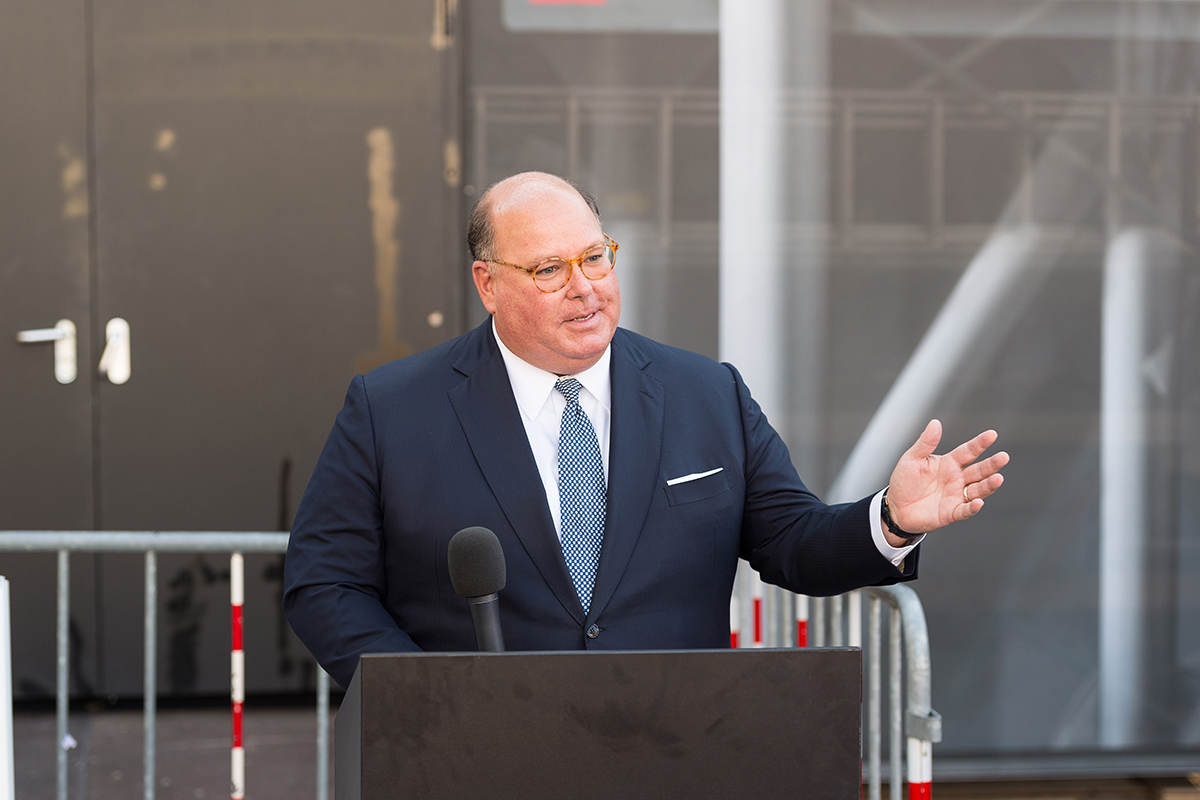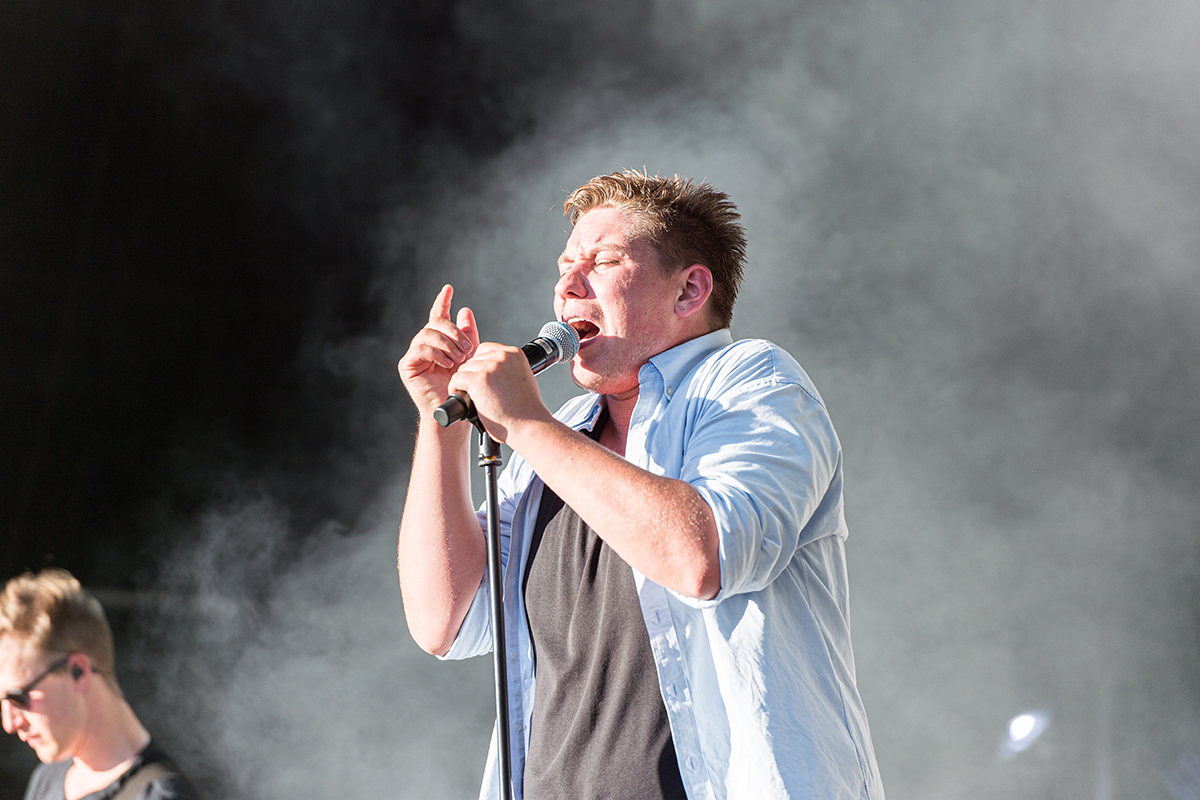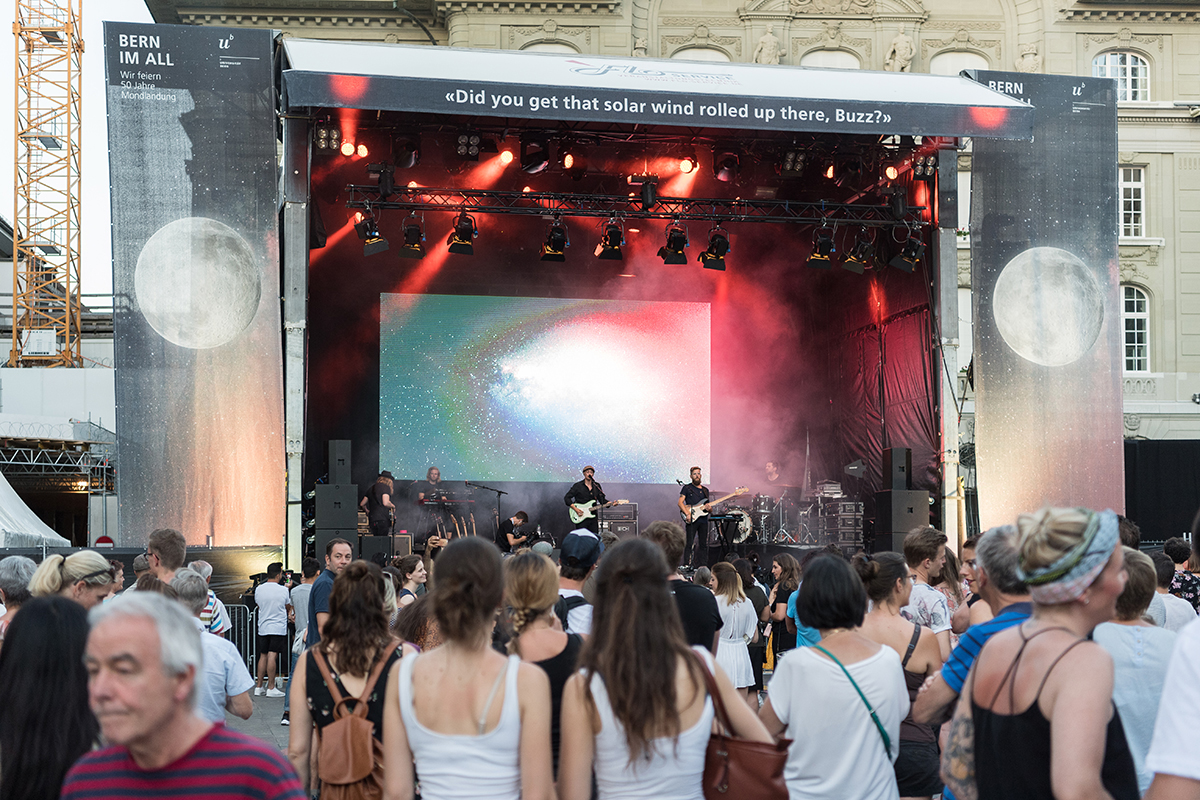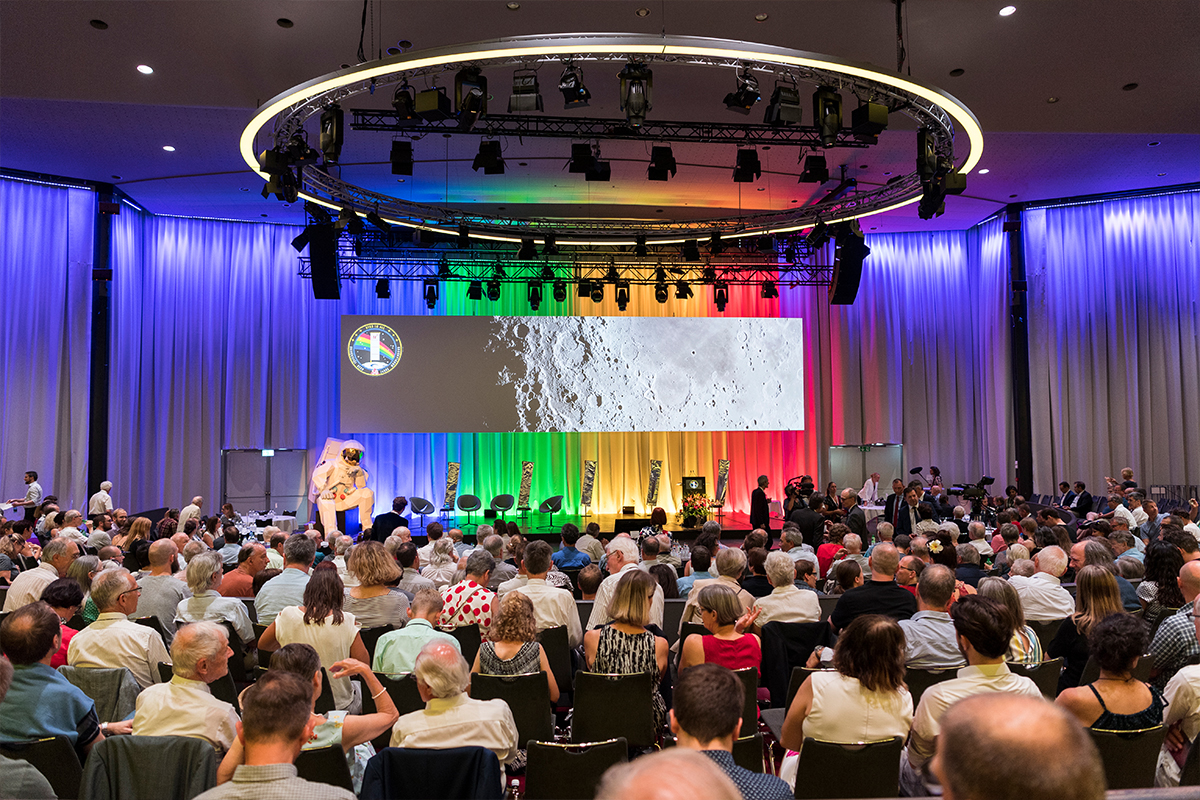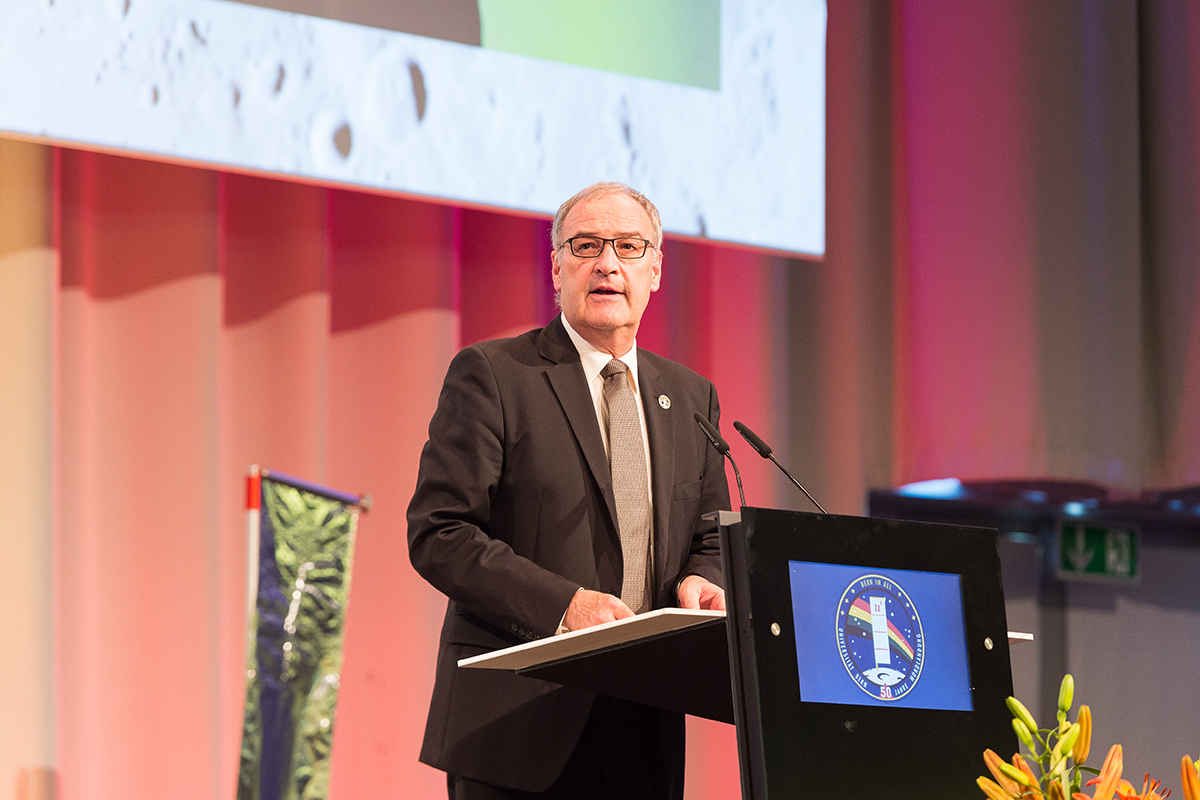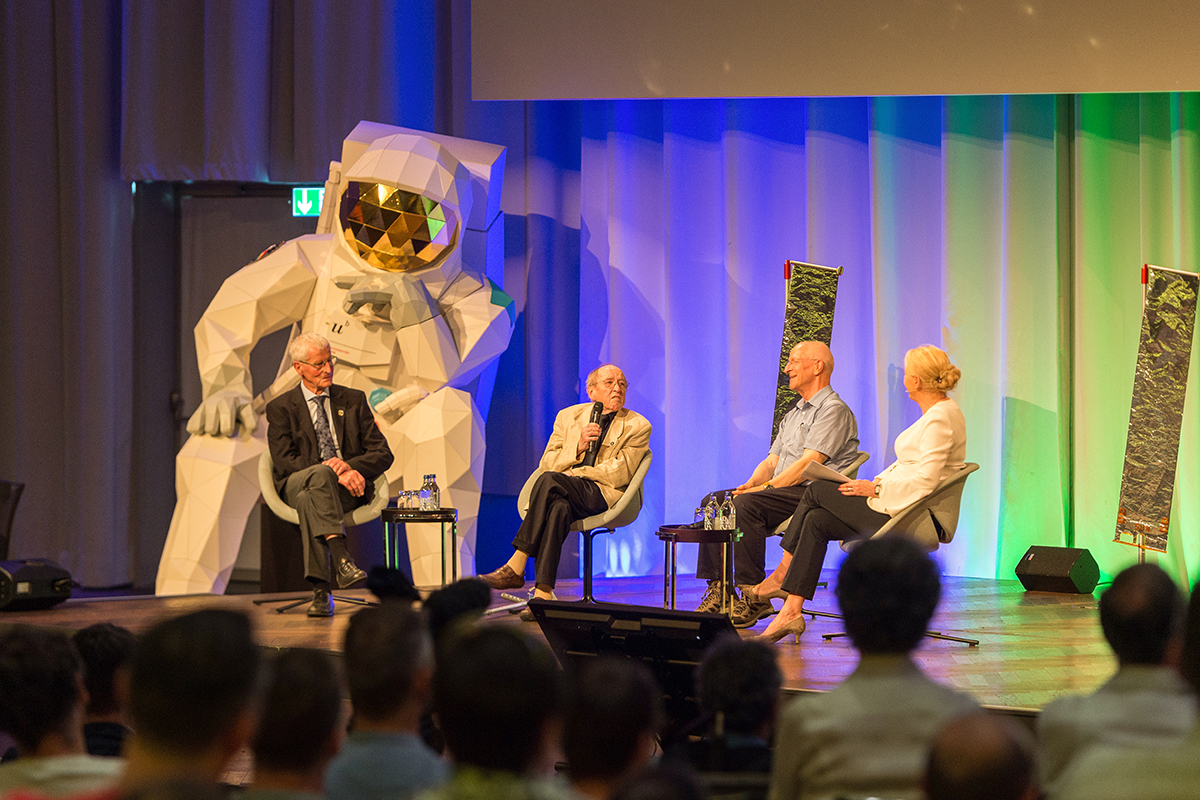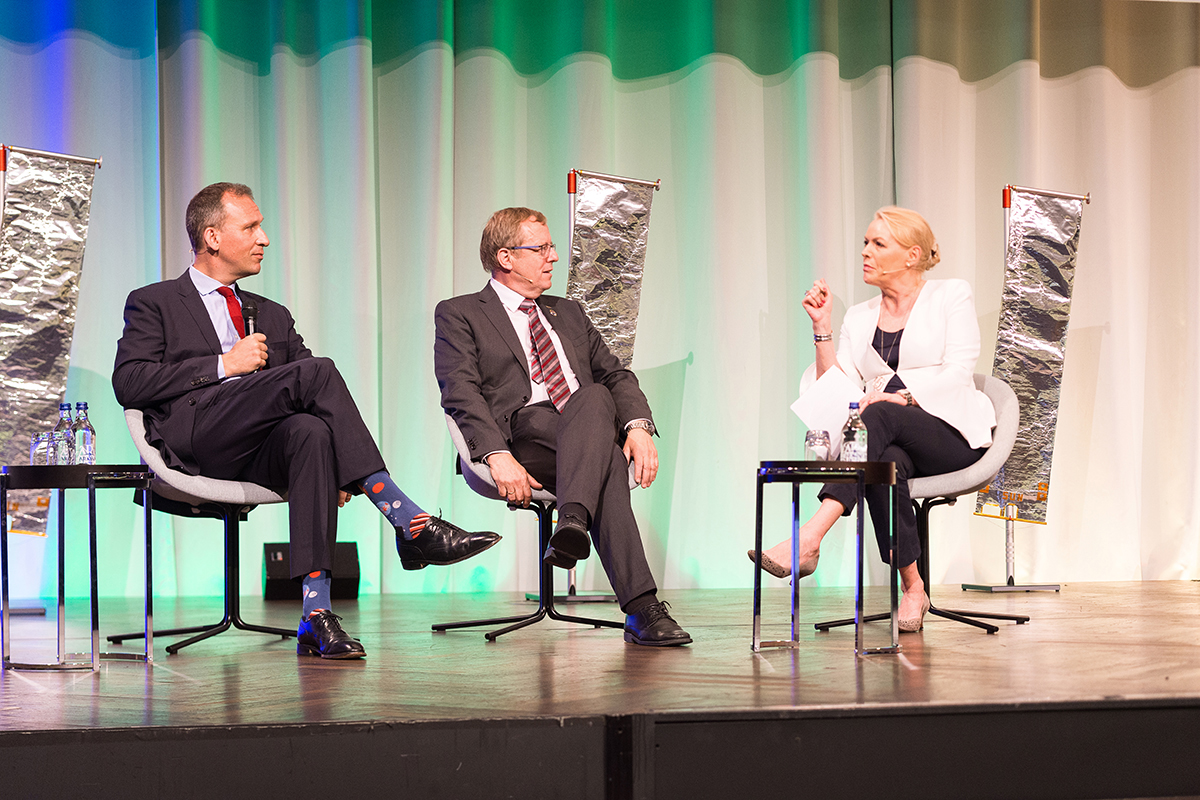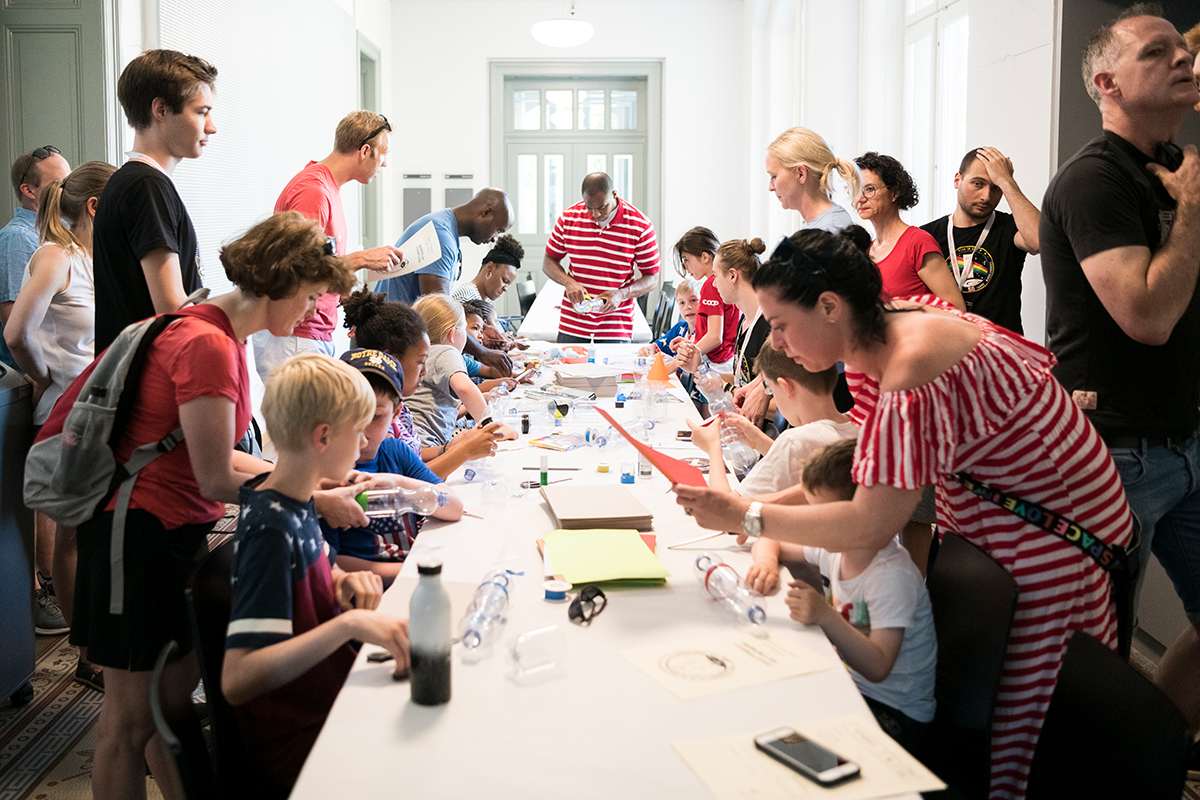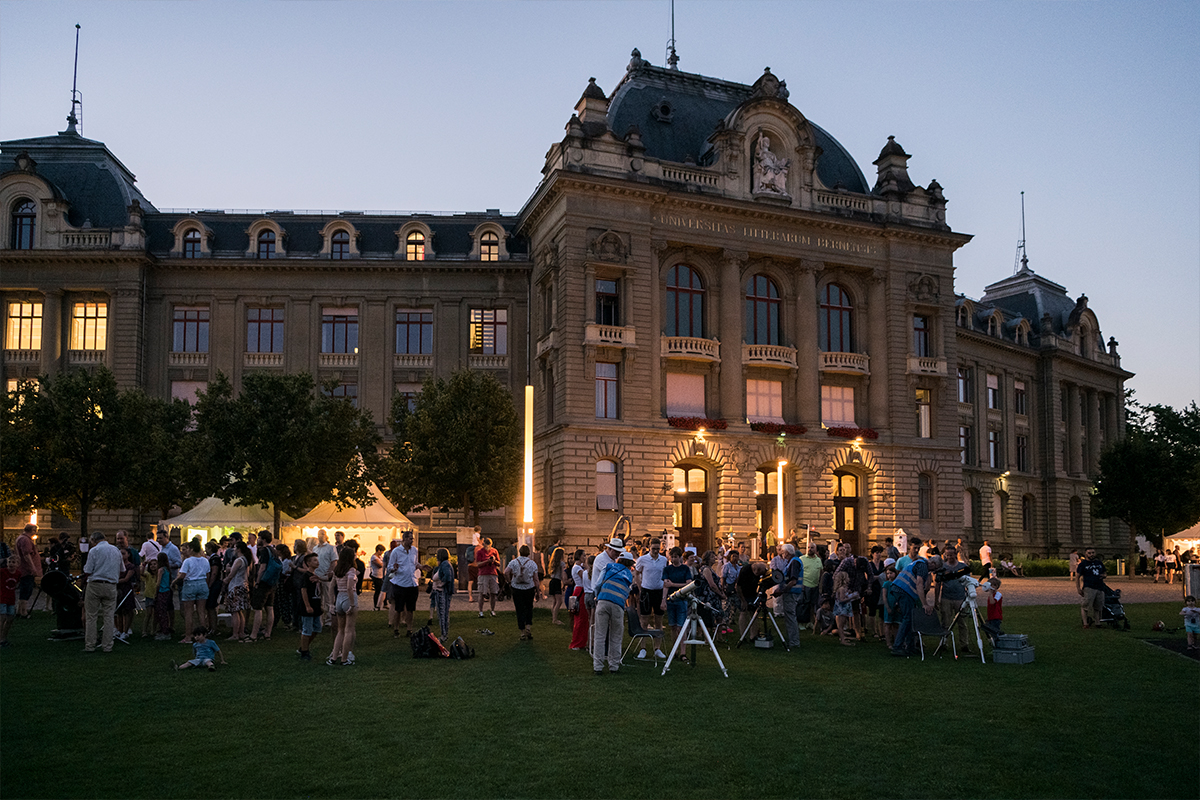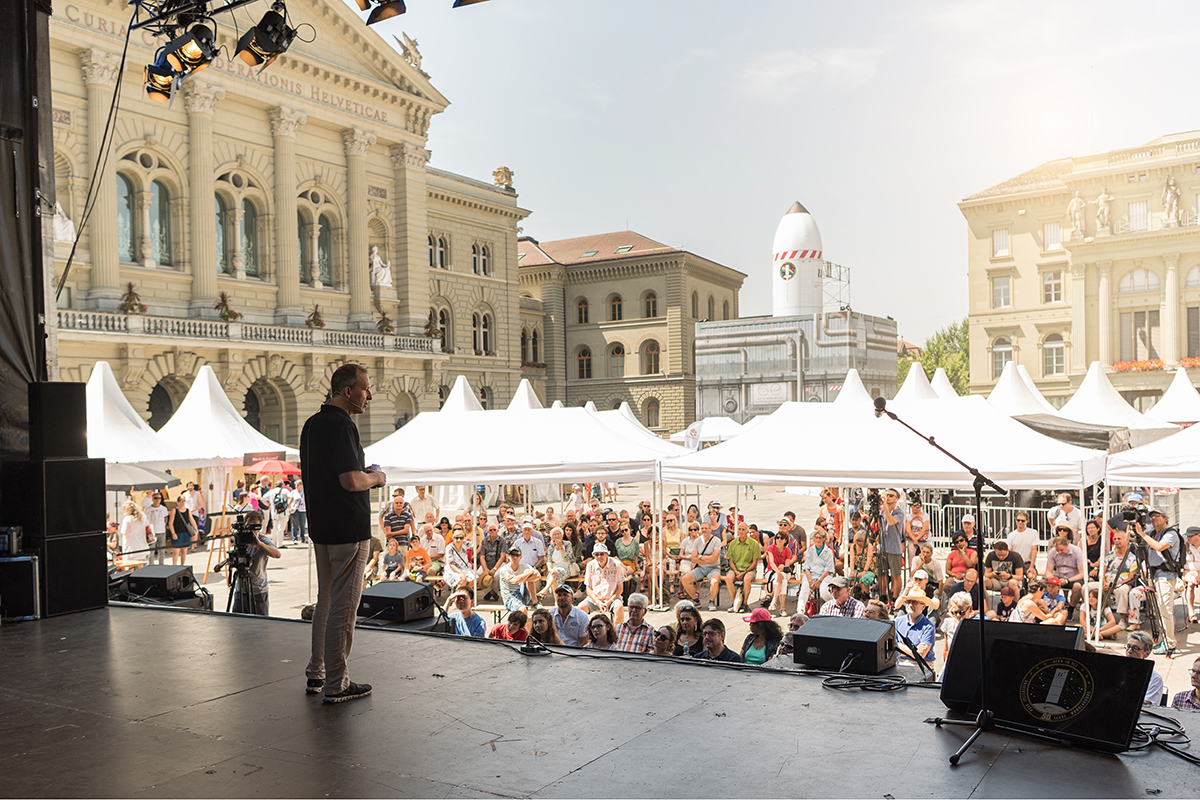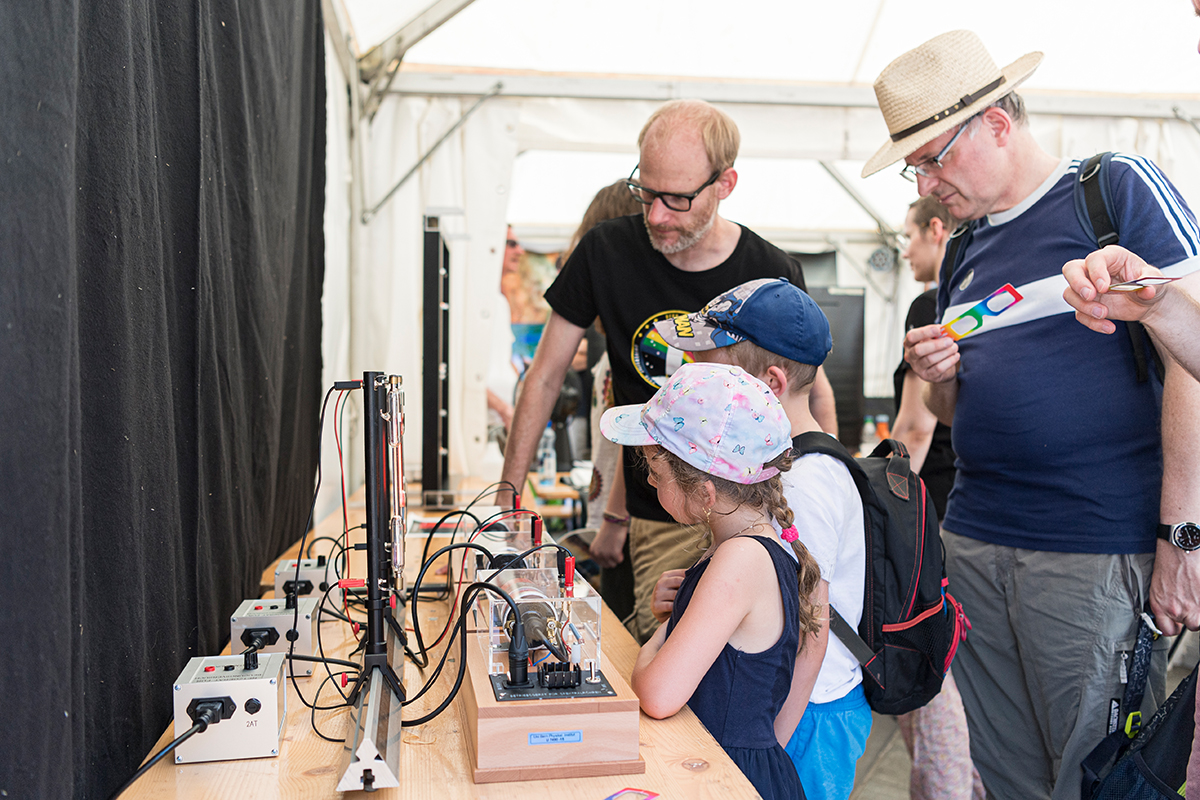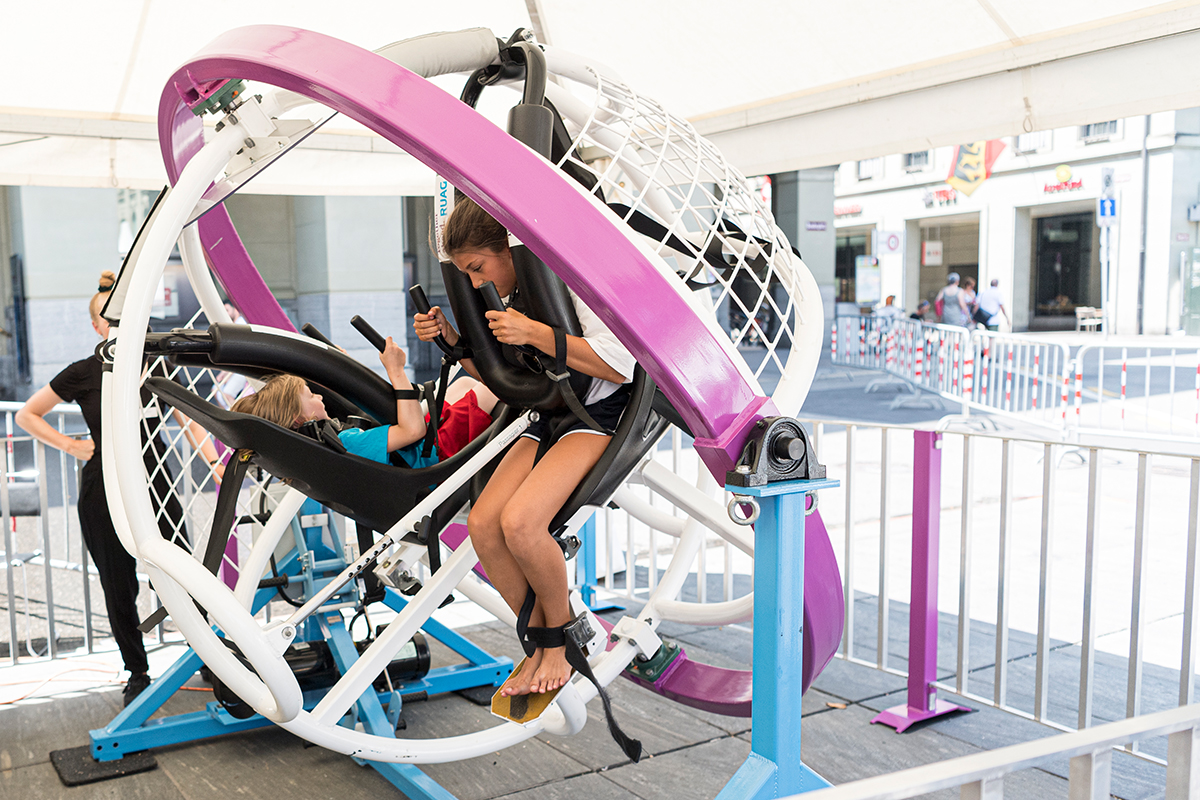Mission accomplished: “Bern in Space” was to be a science festival not only for the experts, but first and foremost for the population. As a supporting programme to the actual anniversary celebrations, 20 cultural partner organisations of the City of Bern dealt from June to October with the subject of the first moon landing and space exploration in very different ways by means of exhibitions, film screenings and panel discussions and thus participated in activities of the University of Bern. “I am proud that we have succeeded in getting the people of Bern and many institutions in Bern excited about the 50th anniversary of the moon landing and Bernese space research,” says Christoph Pappa, Secretary General of the University of Bern with overall responsibility for the “Bern in Space” project.
Space elite in Bern
On July 21, 1969, astronaut Buzz Aldrin planted the University of Bern’s solar wind sail in the ground on the moon, even before doing the same with the American flag. Plenty of reason for the University of Bern to celebrate the 50th anniversary of the moon landing along with its other achievements in space exploration in style with the population.
The mission “Bern in Space” was launched on Friday morning, June 28, with a well-attended, top-class symposium. The audience had the opportunity to ask Günther Hasinger (Director of Science at ESA) and Thomas Zurbuchen (Associate Administrator for the Science Mission Directorate at NASA) questions about the next ESA and NASA missions. Speeches were also given by Xavier Barcons (Director General of the European Southern Observatory, ESO), Ewine van Dishoeck (President of the International Astronomical Union, IAU), Pascale Ehrenfreund (Chairman of the German Aerospace Center, DLR), Eckhard Elsen (Director for Research and Computing at CERN) and Nobel Prize winner Brian Schmidt.
We have lift off
The Rocket Cube on Bern’s Federal Square was inaugurated on Friday evening in the presence of the US ambassador Edward T. McMullen. The focus was on the historical significance of Bern's participation in the moon landing: Rector Christian Leumann stressed the importance of scientific dialog with the public, also in the case of major scientific achievements; the Mayor of Bern Alec von Graffenried gave a spontaneous rendition of “Fly me to the moon” and spoke of the “perfect Bern story”. US ambassador McMullen confirmed that it did actually mean something in the US that the solar wind sail had been unrolled before the American flag - this had only been possible thanks to the great scientific commitment of the Bernese. And President of the Parliament of Bern, Hannes Zaugg, suggested renaming the University the Universe-ity of Bern in the light of all its outstanding achievements.
Inside the Cube, you felt as if you were inside a spaceship passing the milestones of Bernese space exploration - past the moon and the Bernese solar wind sail, Mars and other planets. The big questions were also tackled: Where do we come from? Where is the origin of life? Questions that drive all space researchers.
Marius Bear and Yokko then provided the right sound in front of the Bundeshaus, ensuring true festival atmosphere.
